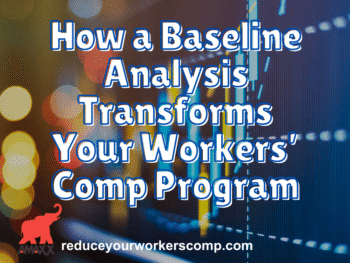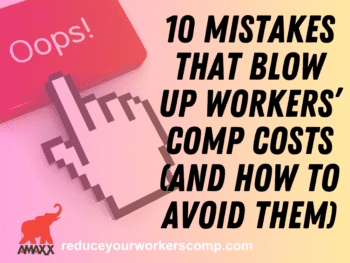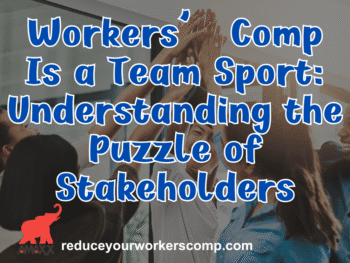
Defining the Unexpected
Let’s be honest. Workers’ compensation is not dull. It is filled with many challenges – and the unexpected. This can include the following types of claims:
- Injuries that start as only one body part or condition but morph into several consequential injuries;
- Injuries that involve other levels of insurance. Common examples include an employee being involved in a motor vehicle accident;
- Relative or cumulative trauma injuries;
This post is one in a 5-part series:
- Part 1 of 5: Work Comp and the Grand Bargain- A Primer
- Part 2 of 5: Work Comp and the Grand Bargain – Understanding Work Comp Insurance
- Part 3 of 5: Work Comp and the Grand Bargain – Primary Liability and Compensability
- Part 4 of 5: Work Comp and the Grand Bargain – Tips for Stakeholders to Reduce Premiums & Costs
- Park 5 of 5: Work Comp and the Grand Bargain: Dealing with the Unexpected
- Legacy claims – claims that continue, and on, and on…; or
- Death and dependency claims.
The list is endless. Now is the time to prepare for the unexpected.
Preparing Starts with Best-In-Class Investigation
Members of the claim management team need to be well-versed in an effective and efficient investigation of every claim. This is especially the case when it involves the unexpected. Now is the time to get your claim investigation off to the best start possible:
- Witnesses: Develop a list of potential witnesses when a claim is reported. Ask yourself the “reporter questions” – who, what, when, where, how, and why. Asking these questions will allow you to identify witnesses better when you gather information.
- Documentary Evidence: The list of documents that can be used as evidence in a workers’ compensation claim is endless. Some basics include ISO claims searches, videos, and OSHA records. More complex claims should include reviewing court records, social media posts, and police reports. Never stop digging.
Social media presents a treasure trove of information on any claimant. Be careful when searching the various networking sites; only use them ethically.
In addition to these types of records and documents, review and determine if additional discovery is necessary. This can include:
- Use of employee and other witness depositions;
- There is a need for multiple independent medical examinations when more than one body part of the condition is in dispute. This may especially be necessary in claims involving Post-Traumatic Stress Disorder or traumatic brain injuries.
- Investigate prescription drug use family histories and use motion practice to obtain psychological and/or psychiatric records, if needed.
Surveillance is also a vital tool that should be used when investigating the unexpected. Be cautious about using service providers with the necessary permits or licenses, and do not break ethical rules or statutes. Always be innovative and effective during the discovery process.
Other Items to Consider and Use
Other tools can be used when being proactive with the unexpected. These items include:
- Embrace the Use of Team Roundtable: Use this as an opportunity to share experiences and develop younger or less experienced members of the claim management team. Never be judgmental or downplay someone’s input.
- Encourage Honest and Professional Discussion at File Reviews: File reviews often turn into finger-pointing sessions. This practice needs to stop. Effective file reviews should include all interested stakeholders and be used to provide direction, seek input, and move files forward toward settlement.
- Be Proactive and Willing to Pivot: As the facts are discovered, a theory of the case may change. This does not mean someone was wrong. Never be afraid to change direction on a claim.
- Bring the Next Generation Into the Team: Now is the time to think about the future of your claim team. Use the unexpected as an opportunity to attract new talent. Keeping everyone involved will grow the next generation’s interest in workers’ compensation and develop the next group of industry leaders.
Now is the time to get started.
Conclusions
The unexpected is out there. Are you prepared? Being ready for these claims will pay dividends when running an effective claim team. Make the best effort possible to identify the documents that will be used as evidence and the proper witnesses. Consider the many tools available for the claim team and make intelligent decisions that advance the file toward settlement without unnecessary litigation. Never forget to use opportunities such as a file review or roundtable to advance settlement and bring new people and ideas into being a part of the solution.

Contact: mstack@reduceyourworkerscomp.com.
Workers’ Comp Roundup Blog: http://blog.reduceyourworkerscomp.com/
Injury Management Results (IMR) Software: https://imrsoftware.com/
©2024 Amaxx LLC. All rights reserved under International Copyright Law.
Do not use this information without independent verification. All state laws vary. You should consult with your insurance broker, attorney, or qualified professional.














